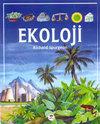Spatial Pattern of Dissolved Organic Carbon and its Specific Ultraviolet Absorbance under Different Scales in a Wetland Complex on the Eastern Tibetan Plateau
Q3 Environmental Science
引用次数: 6
Abstract
The concentration of dissolved organic carbon (DOG) and the specific ultraviolet absorbance (SUVA) of peat, soil, and water samples collected from the Zoige wetlands on the eastern Tibetan Plateau in August 2008 were determined. The DOC concentration was 36.34 +/- 15.27 mg L-1, falling in the range of the DOC concentration in wetlands of other regions. However, the mean SUVA of the DOC was 0.55 +/- 0.33 L mg(-1) m(-1), showed a comparatively low aromaticity among wetlands. Significant variations of DOC concentration and their SUVA were both found under different spatial scales. The results showed that both the concentration and aromaticity of the DOC are influenced by the water table in the peatland. The significant difference of the DOC concentration among the three types of wetland showed the influence of plant growth on the DOC in the soils, and the SUVA indicated the different sources of the DOC in the different wetlands. The results also indicated that the DOC concentrations in stream water are consistent to the proportion of peatlands in the corresponding catchment.青藏高原东部湿地复合体不同尺度下溶解有机碳的空间格局及其比紫外吸收
测定了2008年8月在青藏高原东部若尔盖湿地采集的泥炭、土壤和水样的溶解有机碳(DOG)浓度和比紫外吸收(SUVA)。DOC浓度为36.34 +/- 15.27 mg L-1,落在其他地区湿地的DOC浓度范围内。而DOC的平均SUVA为0.55 +/- 0.33 L mg(-1) m(-1),芳香性在湿地中相对较低。不同空间尺度下,DOC浓度及其SUVA均存在显著差异。结果表明,泥炭地土壤中DOC的浓度和芳香性均受地下水位的影响。三种湿地间DOC浓度的显著差异表明植物生长对土壤DOC的影响,SUVA表明不同湿地中DOC的来源不同。结果还表明,河流中DOC浓度与相应集水区泥炭地比例一致。
本文章由计算机程序翻译,如有差异,请以英文原文为准。
求助全文
约1分钟内获得全文
求助全文
来源期刊

Ekoloji
环境科学-生态学
CiteScore
1.10
自引率
0.00%
发文量
0
审稿时长
>12 weeks
期刊介绍:
Cessation. Ekoloji is an international journal that focuses on papers that report results from original research on all disciplines engaged in the field of environmental research. We welcome articles that cover the entire spectrum of environmental problems and environmental pollutants, whether chemical, biological or physical. Its coverage extends to all environmentally related issues: air and water pollution, solid waste, noise, recycling, natural resources, ecology and environmental protection. It includes articles on basic and applied environmental pollution research, including environmental engineering and environmental health. All types of pollution are covered, including atmospheric pollutants, detergents, fertilizers, industrial effluents, metals, mining wastes, oil, pesticides, plastics, radioactive materials and sewage. It also includes research papers on ecological and environmental issues such as climate change, biodiversity. The primary criteria for publication are scientific quality and ecological/environmental significance.
The journal will be read and contributed to by biologists, applied ecologists, environmental scientists, natural resource specialists, environmental engineers, environmental health specialists, agro-ecologists, veterinaries, agricultural engineers, landscape planners and designers. The journal welcomes full "research papers" and short "research notes", only in the English language.
 求助内容:
求助内容: 应助结果提醒方式:
应助结果提醒方式:


